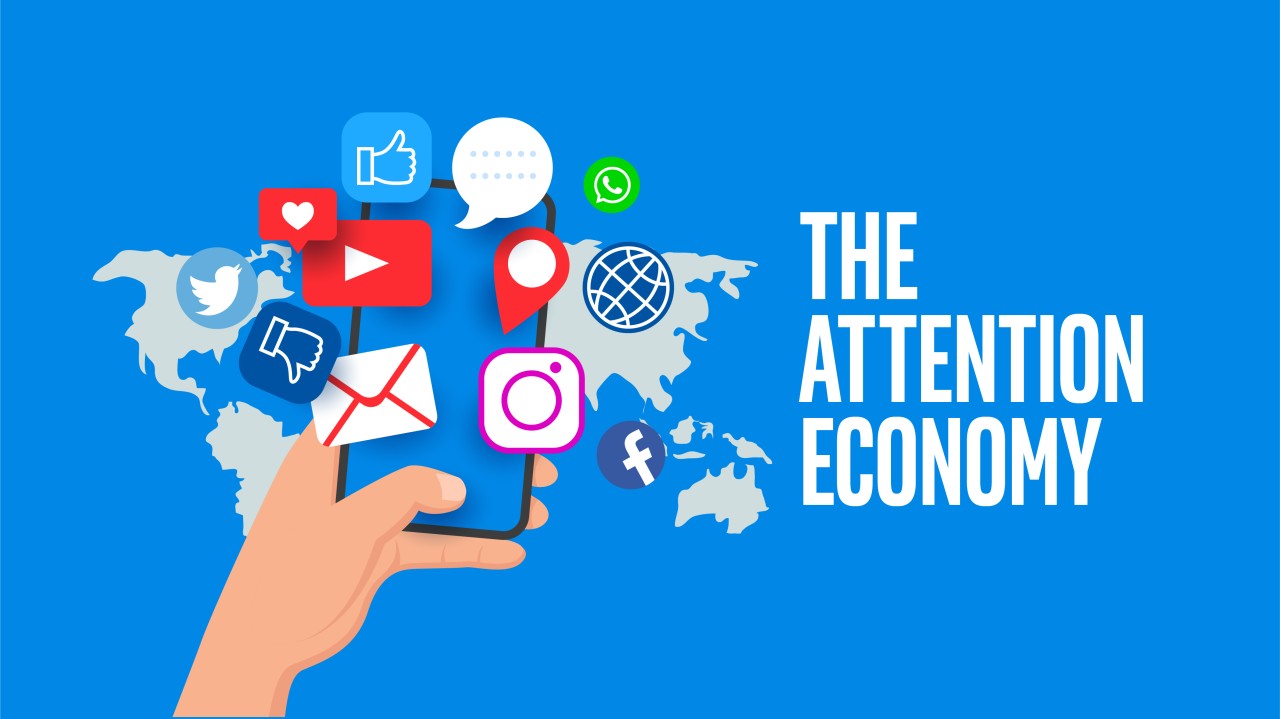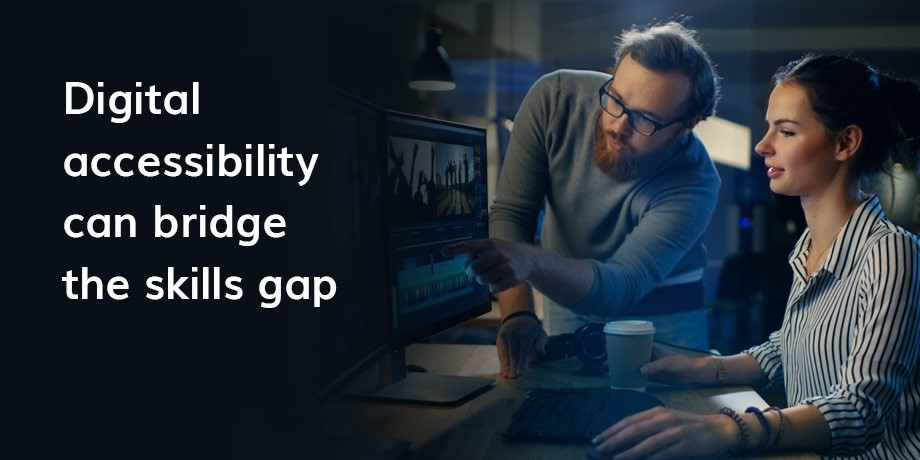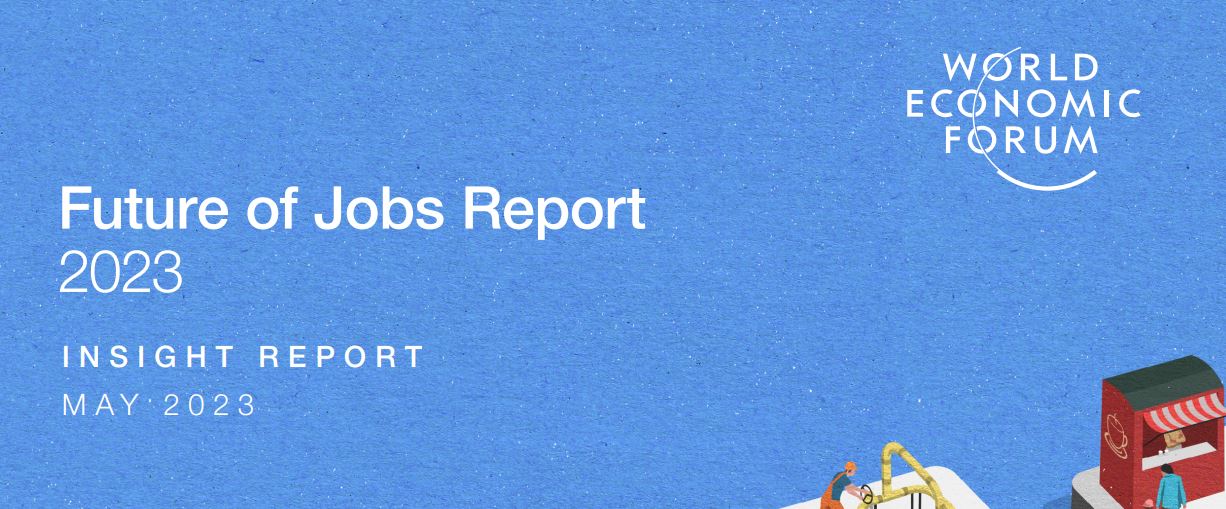How the Attention Economy Is Driving Innovation in Digital Accessibility
How the battle for audience attention demands and enables innovation in digital accessibility.

In the battle for consumer attention, brands have to embrace new and thoughtful methods of engagement. One solution is to embrace digital accessibility, which will open the doors to new target audiences, redefine content, build new opportunities and elevate the brand’s reputation and ROI, discusses Ezekiel J Rudick, Vice President of Brand Marketing, Siteimprove.
From email spam to pop ads to push notifications, consumers are inundated with an unrelenting stream of content. According to recent research opens a new window, the average consumer spent 474 minutes a day on digital media in 2020 – a number that only promises to increase.
As more businesses accelerate their digital transformation efforts, consumers are becoming saturated with content, leaving them feeling burnt out and fatigued. With digitally native brands having a head start over legacy competitors, organizations need to prioritize how they are capturing the consumer’s finite attention span if they want to survive and thrive in this new digital economy.
The battle for consumer attention has spurred the attention economy – an approach to the management of information that treats human attention as a scarce commodity. Digital consumers are human first and only have so much attention to give. For today’s brands to win, they need to own the largest share of consumer attention.
For too long, marketers and business leaders have been pumping a constant stream of content to consumers as the only way to stay top of mind. But content fatigue is real and will only compound in severity. Brands need to take a thoughtful, holistic approach to how they go to market with their content initiatives so they can engage, inspire, and acquire the right audience through immersive content experiences.
Content has never mattered more – it fuels every channel, every experience, and every possible marketing outcome. But for content to truly make an impact, it needs to be accessible, inclusive, relevant, discoverable, and usable.
Taking a one-size-fits-all approach is not enough anymore. In fact, recent findings open a new window from Salesforce and reveal that 66% of customers expect brands to understand their unique needs and expectations, and 52% expect all offers to be personalized. Also worth noting is that nearly 60% of consumers open a new window and say they are more loyal to brands that embrace diversity, equity, and inclusion.
The numbers don’t lie. As businesses continue to navigate the growing attention economy, it is becoming abundantly clear that those who will win are creating and distributing content for every person to experience, engage, and thrive in the digital world – something that hasn’t always been the case, especially for individuals who are part of the disabled communities. It is the focus on vying for customer attention with a thoughtful content strategy that is helping to improve and elevate digital accessibility.
What is Digital Accessibility and Why Does It Matter
As businesses move headlong into a digital future, creating inclusive, equitable, and seamless online environments is central to ensuring superior website experiences and driving growth. Inclusivity online means better access to more customers who are going to share their brand experience with others. High-quality content and accessible content shouldn’t be mutually exclusive; when the two come together, it breaks down barriers for those in the disabled community and improves digital accessibility.
Digital accessibility is about removing the virtual barriers that prevent people with disabilities from accessing and/or interacting with websites, digital tools, and technologies that have become an integral component of daily life. By designing digital content in such a way that it does not inhibit people with visual, auditory, motor, or cognitive disabilities access or engagement, organizations are creating new opportunities for those communities, empowering everyone to thrive online.
According to the World BankOpens a new window, around 15% of the global population (that is, one billion people) live with some form of disability. Despite these high numbers, only 3% of the internet is accessible open a new window to people with disabilities.
See More: 3 Myths About Accessibility in the Design Process, Debunked
Why is this the case?
The sad reality is that most business owners, website developers, and content managers do not know how to make their websites accessible, and many don’t even realize they should. While accessibility has become expected in our physical world thanks to the Americans with Disabilities Act, regulations and laws governing online accessibility have not caught up with the rapid development and adoption of the internet.
This means a large segment of consumers is being forgotten or ignored. The lack of digital accessibility deprives disabled communities of digital access, at times to the most basic digital functions (like applying for jobs, ordering groceries or products, or sending emails). In a digital age, this severely disrupts their personal and professional lives.
By leaving the disabled community out of the conversation, marketers are also reducing their opportunity to enhance customer loyalty and brand love. A global population that is one billion strong shouldn’t be overlooked. Finding a way to connect with these audiences drives your brand reputation and, ultimately, your bottom line.
Content Is Our Digital Currency
The digital world does not exist without the content that feeds it. Brands drive leads, customer loyalty, and, ultimately, revenue through their content. To compete in an increasingly loud and crowded online market, brands must get ahead by ensuring their content is accessible, discoverable, and performing.
Making accessible content builds recognition among a more diverse target audience. The message, including verbiage, images, videos, sounds, and more, must be strategically set up to align with accessibility guidelines and optimize SEO to fit a wider audience algorithm. Businesses that intentionally take such measures with their content play an active role in driving accessibility forward.
See More: How To Make Accessibility Part of Email Marketing Best Practice
Fortunately, digital transformation and tech innovations make it easier than ever to make content accessible. From artificial intelligence to automation, technology enables organizations to enhance their content and web pages to ensure their digital assets are accessible and provide an equitable experience for all who visit their websites. These companies can save on manpower and costs by automating the evaluation process, identifying their accessibility gaps and improving visibility so they may reprioritize their investments as needed.
Boosting Content and Experiences with Digital Accessibility
Content has the potential to drive revenue through producing quality leads and fostering brand love within your community, and businesses need to ensure everyone can interact with their content to drive growth.
A focus on digital accessibility will help to drive revenue – and everyone wins! Digital accessibility redefines how brands target and engage with their audiences, what forms of communication and content are available, and what opportunities arise once fresh minds can have a seat at the table. Making the digital world a more inclusive place benefits both organizations and customers and may even redefine the future of the internet.
Have you tried improving the digital accessibility of your content? Tell us about how you’ve driven inclusion for your audience on FacebookOpens a new window, TwitterOpens a new window, and LinkedInOpens a new window.


